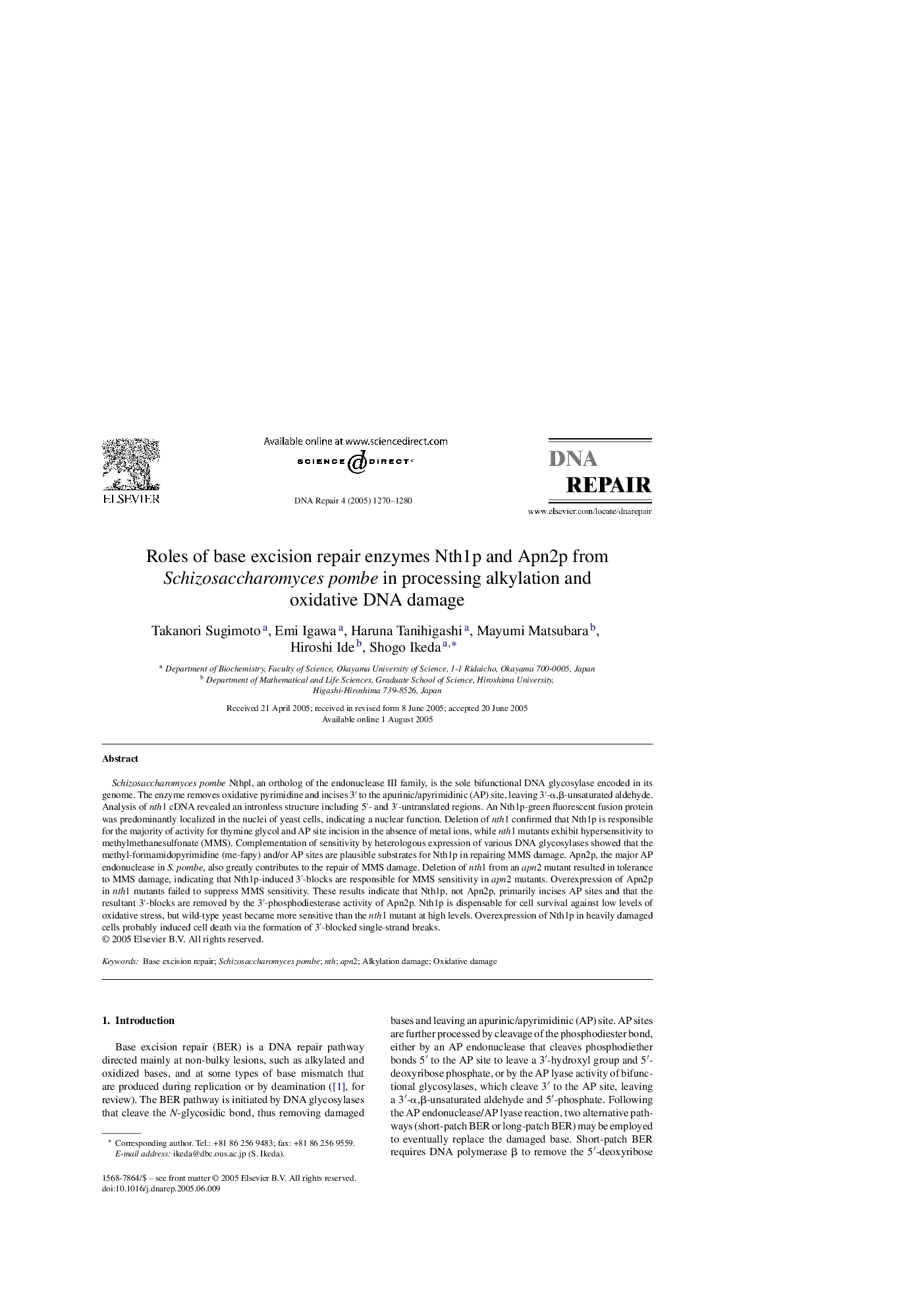| کد مقاله | کد نشریه | سال انتشار | مقاله انگلیسی | نسخه تمام متن |
|---|---|---|---|---|
| 10823996 | 1061959 | 2005 | 11 صفحه PDF | دانلود رایگان |
عنوان انگلیسی مقاله ISI
Roles of base excision repair enzymes Nth1p and Apn2p from Schizosaccharomyces pombe in processing alkylation and oxidative DNA damage
دانلود مقاله + سفارش ترجمه
دانلود مقاله ISI انگلیسی
رایگان برای ایرانیان
کلمات کلیدی
موضوعات مرتبط
علوم زیستی و بیوفناوری
بیوشیمی، ژنتیک و زیست شناسی مولکولی
زیست شیمی
پیش نمایش صفحه اول مقاله

چکیده انگلیسی
Schizosaccharomyces pombe Nthpl, an ortholog of the endonuclease III family, is the sole bifunctional DNA glycosylase encoded in its genome. The enzyme removes oxidative pyrimidine and incises 3â² to the apurinic/apyrimidinic (AP) site, leaving 3â²-α,β-unsaturated aldehyde. Analysis of nth1 cDNA revealed an intronless structure including 5â²- and 3â²-untranslated regions. An Nth1p-green fluorescent fusion protein was predominantly localized in the nuclei of yeast cells, indicating a nuclear function. Deletion of nth1 confirmed that Nth1p is responsible for the majority of activity for thymine glycol and AP site incision in the absence of metal ions, while nth1 mutants exhibit hypersensitivity to methylmethanesulfonate (MMS). Complementation of sensitivity by heterologous expression of various DNA glycosylases showed that the methyl-formamidopyrimidine (me-fapy) and/or AP sites are plausible substrates for Nth1p in repairing MMS damage. Apn2p, the major AP endonuclease in S. pombe, also greatly contributes to the repair of MMS damage. Deletion of nth1 from an apn2 mutant resulted in tolerance to MMS damage, indicating that Nth1p-induced 3â²-blocks are responsible for MMS sensitivity in apn2 mutants. Overexpression of Apn2p in nth1 mutants failed to suppress MMS sensitivity. These results indicate that Nth1p, not Apn2p, primarily incises AP sites and that the resultant 3â²-blocks are removed by the 3â²-phosphodiesterase activity of Apn2p. Nth1p is dispensable for cell survival against low levels of oxidative stress, but wild-type yeast became more sensitive than the nth1 mutant at high levels. Overexpression of Nth1p in heavily damaged cells probably induced cell death via the formation of 3â²-blocked single-strand breaks.
ناشر
Database: Elsevier - ScienceDirect (ساینس دایرکت)
Journal: DNA Repair - Volume 4, Issue 11, 21 November 2005, Pages 1270-1280
Journal: DNA Repair - Volume 4, Issue 11, 21 November 2005, Pages 1270-1280
نویسندگان
Takanori Sugimoto, Emi Igawa, Haruna Tanihigashi, Mayumi Matsubara, Hiroshi Ide, Shogo Ikeda,